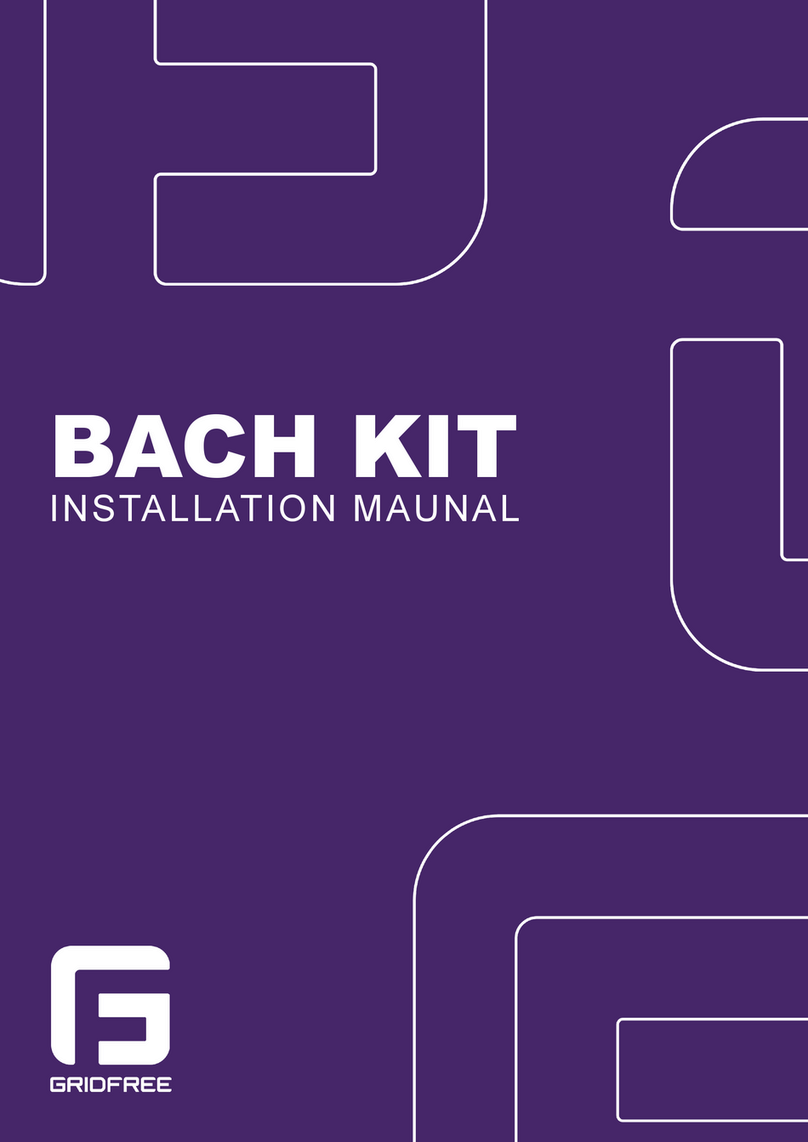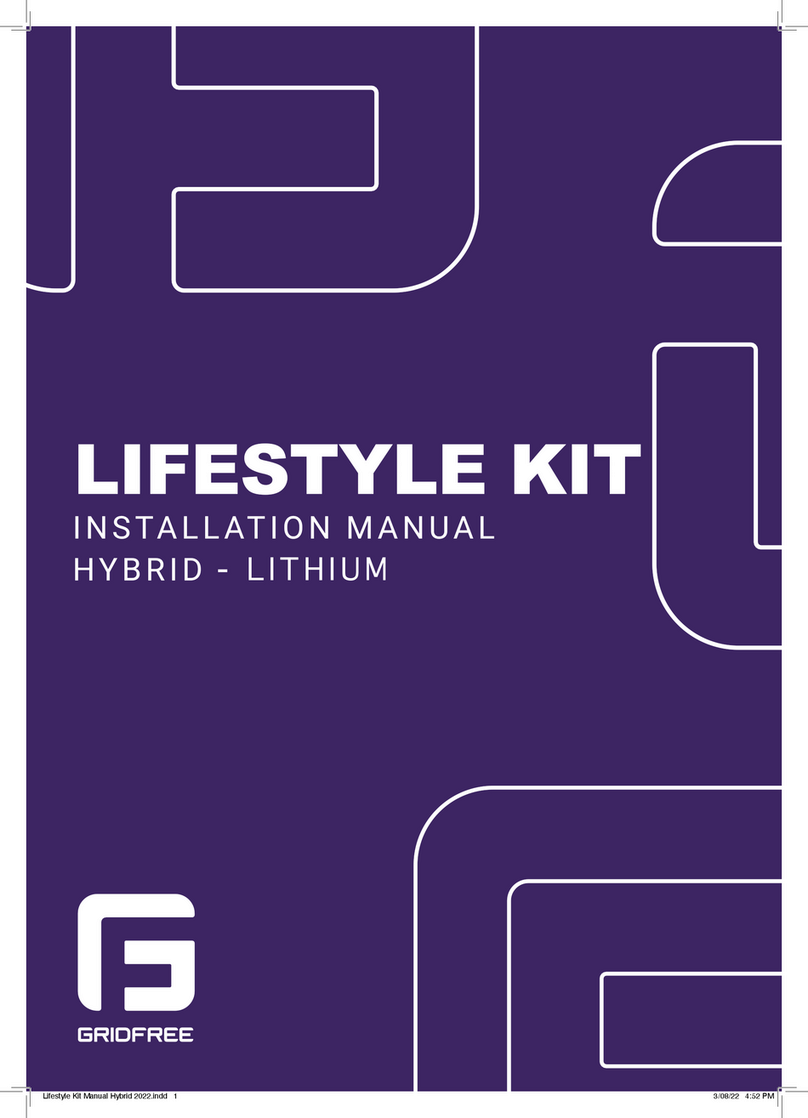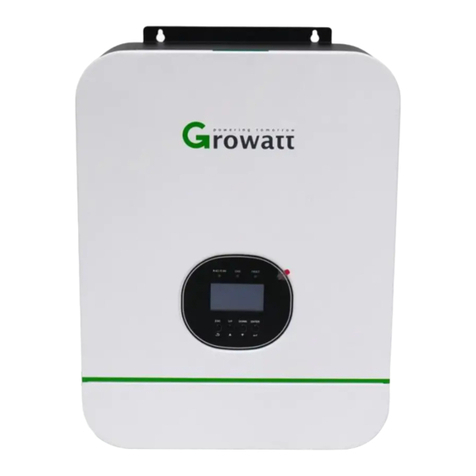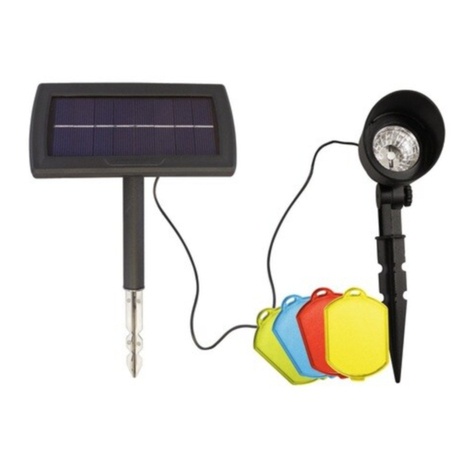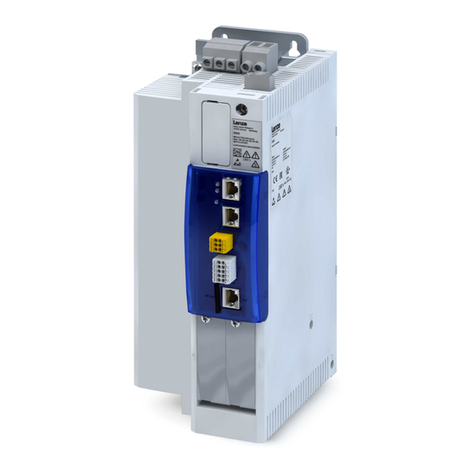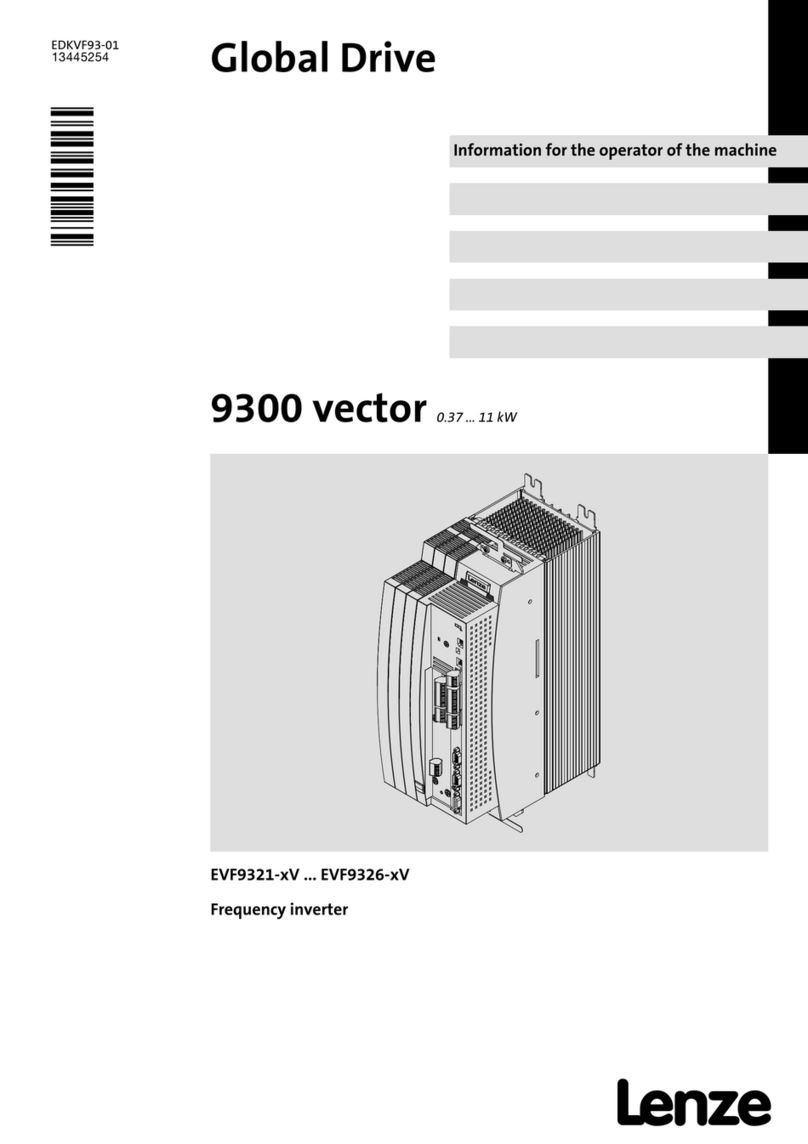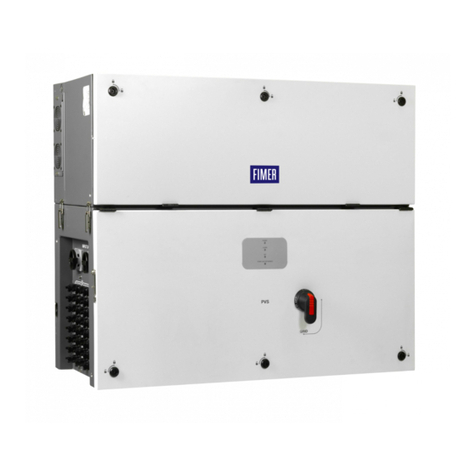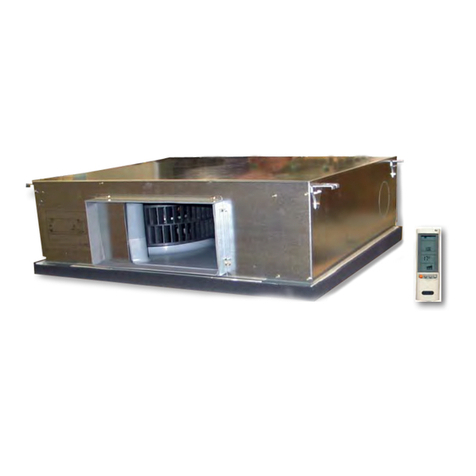GRIDFREE Weekend Warrior User manual

WEEKEND WARRIOR
INSTALLATION MANUAL

2
While this manual seeks to be as comprehensive as possible, some
aspects are not covered due to the different requirements for each
installation. We recommend consulting the applicable standards for all
installations. These may include:
- AS/NZ 3000
- AS/NZ 4509
- AS/NZ 5033
- AS/NZ 5139
Any installation aspect involving voltages above ELV (120VDC) or
groundworks is prescribed electrical work and must be carried out by an
accredited electrician.
WARNING - READ CAREFULLY
Risk of Electrical Shock, Burning and Explosion
- Improper installation or failure to follow proper work-site practices can
place the installer and user at risk of multiple hazards.
- The installation contains works with multiple voltages that can cause
electrical shock.
- Improper installation can cause excessive electrical currents, which may
lead to burning.
- Lead-acid batteries can also release hydrogen gas when they are
charged, which can create a fire or explosion hazard if it accumulates in an
enclosed space.
Risk of Chemical Burn and Poisoning from Battery
Electrolyte
- Lead acid batteries contain sulfuric acid, which can cause burns and
other injuries if it comes into contact with skin or eyes.
- Risk of respiratory problems from inhaling battery acid fumes.
- Do not open or modify the battery.
- Use correct personal protection equipment, such as rubber gloves, boots
and goggles, when handling and installing batteries.
Risk of Injury due to Short Circuit Currents
If a battery bank’s output is short-circuited, injury due to heat or eye injury
due to arc flash may occur.
When working with the battery bank:
- Connect one wire at a time.
- Use battery caps.
- Use insulated tools.
- Do not wear any conductive items.
- Do not place any tools on the batteries.
Risk of Injury due to the Handling of Heavy Objects
- Components in the installation, such as batteries, are very heavy.
- Get help from a partner or team to lift and move heavy objects.
- Use proper lifting techniques and equipment such as dollies, carts and
forklifts.
- Improper handling may lead to back injuries, strains or sprains, slips, trips
or falls.

3
Installation of this kit does not require an electrician. However, we recommend
seeking help if you are not confident in your ability at any stage.
We are always happy to help guide you through the install, troubleshoot, and answer any
questions. You can contact us on 09 218 5533, or info@gridfree.store.
We recommend reading these instructions in full prior to starting your install.
All wiring and voltages in this kit installation are well under the 120V DC standards for
extra-low voltage (ELV). ELV is an electricity supply voltage in a range which carries a very low
risk of electrical shock.
WEEKEND WARRIOR

4
x2
x2
KIT CONTENTS
1x 30A MPPT Charge Controller (3210AN)
2x PERC MONO Solar Panel
2x 12v200Ah Deep Cycle Gel Battery
1x IPT 2000W 24V Pure Sine Wave Inverter (IPT2000-22)

5
1x 25mm² Cable 3m Pre-Crimped (Red + Black)
2x 25mm² M6 Crimps
1x 16mm² Cable 3m Pre-Crimped (Red + Black)
1x 50mm² 30cm Battery Link Cable
1x 6mm² Solar PV Cable Pair 10m – Pre-Crimped MC4 (Red
+ Black)
2x Z-Bracket Solar Panel Mount
1x HT-8 MCB Enclosure
1x 15A Solar PV DC Circuit
Breaker
1x 32A Charge Controller DC
Circuit Breaker
1x 125A Inverter DC Circuit
Breaker
x2
x2

6
REQUIRED TOOLS
Screwdrivers
Wire Cutters
Drill Wire Strippers
25mm Lug Crimping Tool 13mm Spanner
Socket Set

7
WIRING OVERVIEW
15A Solar PV DC Circuit Breaker
125A Inverter DC Circuit Breaker
32A Charge Controller DC Circuit Breaker
11
33
22
1133
22

8
SOLAR PANEL WIRING
1Wire the panels together by connecting the positive terminal of one panel to the
negative terminal of another. This creates two solar array outputs: one positive, one
negative (-).

9
2
DO NOT connect the cable
run to the solar panels until
all solar wiring is complete.
Run the solar cables to
the C15 circuit breakers,
and cut it to length.
Run the 6mm2PV solar cables from the solar panels back to the C15 circuit breakers, and
cut it to length.
The PV cable must be run inside of a suitable conduit when the cable is run across a roof,
floor, or the interior of a building.
DO NOT connect the cable run to the solar panels as the
cables will become live. Wait until all solar wiring is complete.

10
Solar Panel Wiring
3
Indicator is green, showing the
circuit breakers are switched off.
Ensure the solar cable run is NOT connected to the solar panels, and
the circuit breakers are switched off (green indicator, switch down).
Use wire strippers to strip the ends of the solar cable, and terminate them in the circuit
breaker by inserting the stripped end and tightening the screw clockwise. Make sure
the clamp inside the circuit breaker is in contact with the metal conductor, and NOT the
insulation of the wire.

11
Solar Panel Wiring
4When the cables have been terminated in the circuit breaker and the circuit breaker is
switched off, you can now connect the solar panels to the cable run. The circuit breaker
must be switched off when connecting or disconnecting the solar panels from the cable
run.
For your safety, DO NOT connect or disconnect any solar cables when there is current
running through them.
Connect the cable run
to the solar panels.
Ensure the circuit
breaker is switched off.

12
CHARGE CONTROLLER & INVERTER WIRING
1Wire the positive(+) 6mm2cable from the charge controller to the C15 circuit breaker.
Wire the negative(-) 6mm2 cable from the charge controller to the C15 circuit breaker.
2

13
Ensure all circuit breakers are switched off before wiring (switch down, indicator showing
green.
Wire the positive(+) 25mm2cable from the inverter to the C125 circuit breaker.
3
Indicator is green, showing the
circuit breakers are switched off
4

14
Charge Controller & Inverter Wiring
5
6
Wire the negative(-) 25mm2 cable from the inverter to the C125 circuit breaker.
Wire the positive(+) 16mm2 cable from the charge controller to the C32 circuit breaker.

15
Charge Controller & Inverter Wiring
Wire the negative(-) 16mm2 cable from the charge controller to the C32 circuit breaker.
7

16
BATTERY WIRING
30cm Battery
Link Cable
The battery bank is wired with two 12V batteries in series. This creates a 24V battery bank.
The large gauge cable is used to connect the batteries together in series.
Wire the two batteries together from negative to positive with the blue battery link cable.
Wire the 25mm23m set of red and black cables to the inverter through the C125 circuit
breaker.
To minimise risk, we recommend only running one cable at a time and completely
terminating the connections before moving onto the next starting at the breaker.
When running the wires from the battery bank to the circuit breaker, be very
careful not to touch the positive to the negative. This will cause a short circuit,
which will result in a spark and possibly cause damage to the batteries or cables.
1
2

17
Wire the remaining set of red and black 16mm2cable to the charge controller through
the C32 circuit breaker.
3

18
66V
SELECT ENTER
PV
70v
66V
SELECT ENTER
PV 105V
66V
SELECT ENTER
PV
70V
STARTUP PROCEDURE
1
2
Switch on the circuit breakers in the following order:
i) Battery to charge controller breaker C32.
ii) Battery to inverter C125.
iii) Panels to charge controller C15.
The green LED on the charge controller should be flashing, and the panel voltage should
be around 60V-80V in full sunlight. As this charge controller auto-detects voltage, it can
sometimes default to 12V on its first startup and give a battery over voltage warning.
To fix this, switch off all the circuit breakers in the reverse order of the previous step, and
switch them back on again in the correct order.

19
3
4
Flick the switch located on the side of the inverter to “ON”, and check that the “POWER”
light is showing green. If it does not show green, consult the inverter manual to identify
the fault.
The system is now fully functional. The last step is to select the GEL battery charging
mode on the charge controller. Click “SELECT” until the battery voltage interface is
shown.
Hold down “ENTER” for 3 seconds, then click “SELECT” until “GEL” is displayed, and press
“ENTER”.
AC OUTPUT
OFF
FAULT POWER
NEG
REMOTE RS-485
ON
POS
AC OUTPUT
GEL
SELECT ENTER
BATT. TYPE
12.2
V
SELECT ENTER
BATT.
The charge controller can be set to FLD by default. This is the
incorrect charging range and will damage your batteries.

20
GETTING THE MOST OUT OF YOUR KIT
GEL
SELECT ENTER
BATT. TYPE
24.4
V
SELECT ENTER
BATT.
Charge Voltage
100% 25.5V-30V
90% 25.25V
80% 25V
70% 24.7V
60% 24.5V
50% 24.3V
To get the most life out of your batteries, they should not be discharged lower
than 50%.
You can check the state of charge of the batteries on the charge controller. Make
sure the charge controller is on the screen shown above by pressing the “SELECT”
button. The screen will display BATT on the left-hand side.
The charge controller displays the battery level
in terms of voltage.
We have included this handy table that helps you
convert from battery voltage to battery
percentage.
The voltage will be higher than 25.5V when there
is charge coming from the solar panels.
Therefore, if the battery voltage displayed is a
higher value than 25.5V, and there is less than 5A
going into the batteries, the batteries will be at
100% charge.
Other manuals for Weekend Warrior
1
Table of contents
Other GRIDFREE Inverter manuals
Popular Inverter manuals by other brands

Mitsubishi Electric
Mitsubishi Electric Freqrol Z024-UL instruction manual

Velleman
Velleman PI3000B-12V user manual

CUSTOM POWER DESIGN
CUSTOM POWER DESIGN Handy Mains Series quick start guide
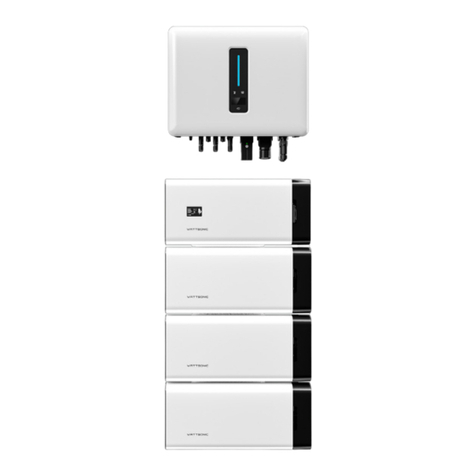
wattsonic
wattsonic 4.0K-25A-3P user manual
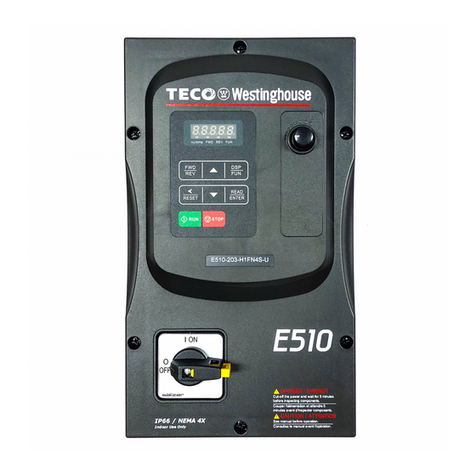
TECO-Westinghouse
TECO-Westinghouse E510 Start-up and installation manual
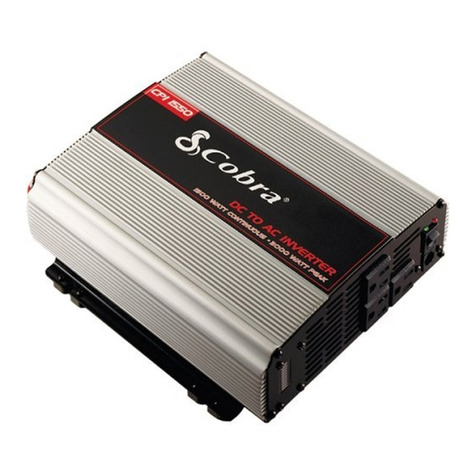
Cobra
Cobra CPI 1550 operating instructions
